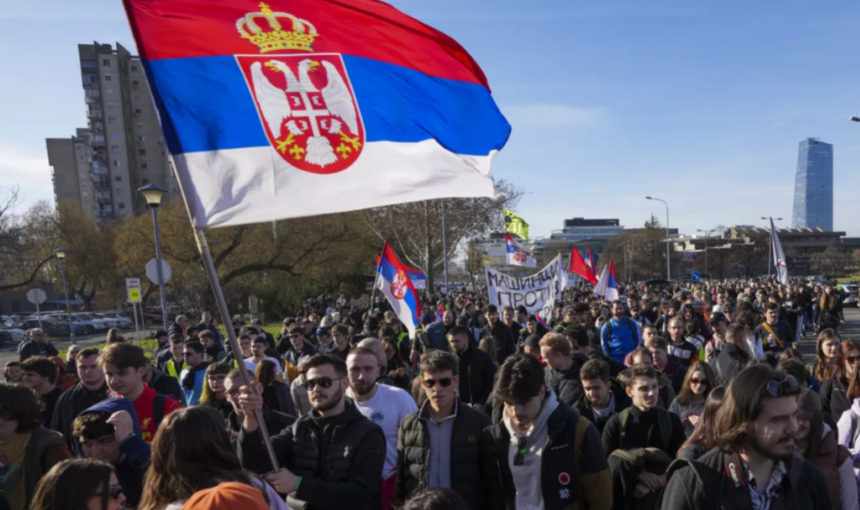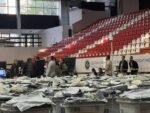Protesting students from universities in Serbia started an 80-kilometer march from Belgrade to Novi Sad on Thursday, with plans to participate in a 24-hour blockade of bridges in the northern Serbian city.
The protests, which are set to take place on Saturday, are a continuation of a series of demonstrations sparked by the deadly collapse of a train station in November, which killed 15 people.
The student protests—now the largest in Serbia in decades—continue to pose a challenge to President Aleksandar Vučić’s government.
The week-long protests led to the resignation of Serbian Prime Minister Miloš Vučević earlier this week and further concessions from the authorities. However, students do not believe their demands have been fully met.
“This march is our way of showing support for our colleagues in Novi Sad,” said Tatjana Gogić, a biology student. “We also want to show how persistent we are and that we do not plan to stop anytime soon if our demands are not met.”
“We are asking for justice,” said Vasilije Milanović, a student at the Faculty of Technical Engineering in Belgrade. “We will not stop this and we will follow through until the end.”
The tragedy in Novi Sad has become a flashpoint, reflecting broader dissatisfaction in Serbia with the populist, right-wing government of Vučić.
Protesters believe that the roof at the train station collapsed due to slow work during reconstruction, poor supervision, and a failure to adhere to safety regulations—all caused by corruption in infrastructure projects with Chinese companies.
In a press conference on Monday, Vučić called for dialogue with the students, stating that “we need to lower tensions and begin to talk to each other.”
“Any kind of crisis presents a serious problem for our economy,” said Vučić. “Such a situation in society is not good for anyone.”







